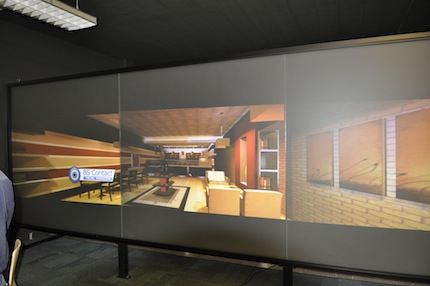Undergrad Architecture Students Get Immersive Lab at U Missouri
- By Dian Schaffhauser
- 01/03/12
The University of Missouri (MU) has created an $85,000 immersive lab to allow its undergraduate architectural studies students to visualize what their buildings and rooms will look like when they're actually built. The Immersive Visualization Lab (iLab) combines commodity high-definition displays into a space that displays designs in 3-D.
"Most university immersion labs are reserved primarily for graduate students to use for research purposes," said Bimal Balakrishnan, an assistant professor of architectural studies in the MU College of Human Environmental Sciences. "While the MU iLab will be used for research, it will also serve as an excellent teaching and experiential tool for undergraduate students."
The MU iLab has three large high-definition projection screens sitting side-by-side to create one continuous, horizontal viewing screen. Wearing special glasses, students can view their computer-generated drawings on the screen in 3-D. The immersive effect of the continuous screen gives students the sense that they're standing inside the buildings they've designed. Balakrishnan says this virtual reality effect can be a valuable tool for architectural designers.
| | 
The University of Missouri's iLab allows students to explore the spaces they design with high-definition projection screens. | |
"Visualizing true characteristics in a three-dimensional space is one of the biggest challenges design students face," he explained. "This is because design mediums, like models and floor plans, place the students outside of what they are designing. The iLab will not only allow students to experience their designs from the inside, but they also will be able to view their designs in a much larger scale and experiment with different textures and styles in real time."
The iLab will let students connect computers and project designs together on an interactive whiteboard for tackling more extensive projects.
The project kept costs down by doing development of the infrastructure in-house. The university said that because commodity gear is being used, components can be replaced as they grow obsolete.
Balakrishnan acknowledged the advice and support of faculty and staff from the Immersive Environments Lab (IEL) and the Immersive Construction (iCon) Lab, both at Pennsylvania State University.
About the Author
Dian Schaffhauser is a former senior contributing editor for 1105 Media's education publications THE Journal, Campus Technology and Spaces4Learning.